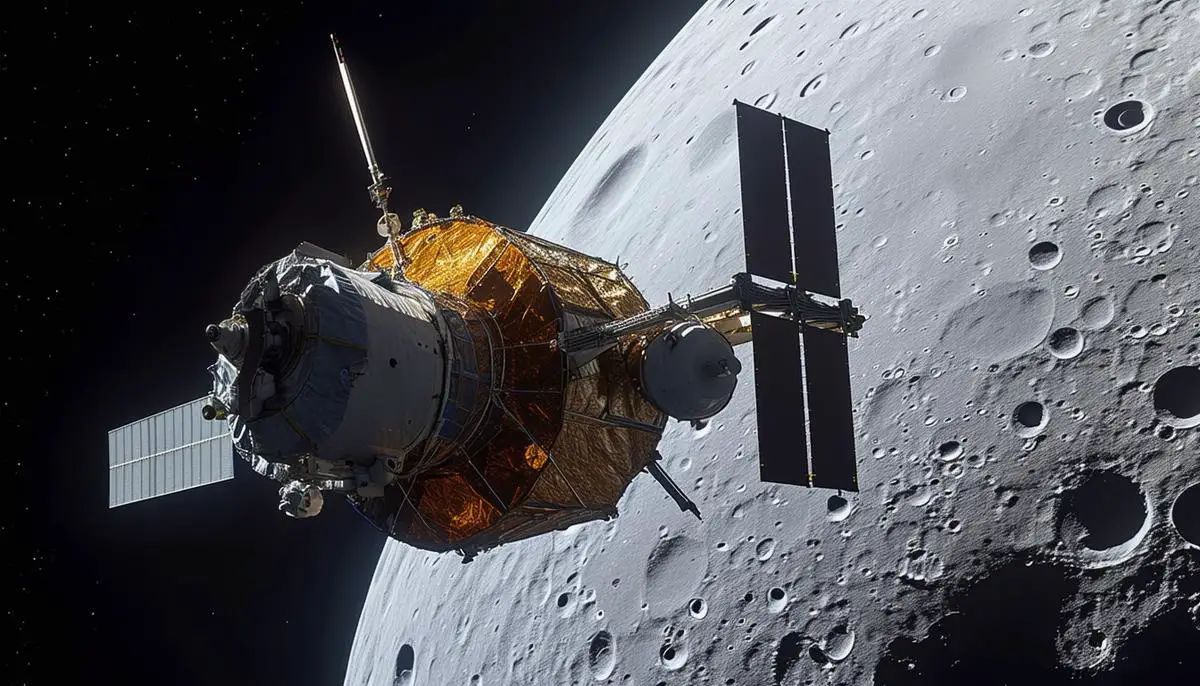Contents
Artemis II Mission Overview
Artemis II, NASA's first manned Moon mission since the Apollo era, is set to launch in November 2024. Using the Space Launch System (SLS) rocket and Orion spacecraft, a crew of four astronauts will embark on a roughly 10-day journey that will take them around the Moon.
Commander Reid Wiseman, pilot Victor Glover, and mission specialists Christina Koch and Jeremy Hansen will monitor and manage every system from liftoff to splashdown. They will verify life-support systems, navigation accuracy, and prepare for future manned missions under the Artemis program.
After the moon flyby, the crew will return to Earth, splashing down in the Pacific Ocean. The success of Artemis II will influence timelines and technologies for Artemis III and beyond, paving the way for deeper space exploration and potential lunar outposts.

Biographical Sketches of Artemis II Astronauts
- Reid Wiseman, the mission commander, brings expertise as a naval aviator and engineer. He previously spent 165 days aboard the International Space Station in 2014.
- Victor Glover, the pilot, has a background that includes engineering degrees and experience as a naval aviator with 3,000 flight hours across 40 different aircraft. He was part of the SpaceX Crew-1 mission.
- Christina Hammock Koch, a mission specialist, has worked on prominent space projects like Juno and the Van Allen Probes. She set a record for the longest single spaceflight by a woman at 328 days and participated in the first all-female spacewalk.
- Jeremy Hansen, the first Canadian selected for a deep space mission, is also a mission specialist. His diverse training includes undersea and cave explorations, preparing him for the challenges of long-duration space missions.
Training and Preparation for Artemis II
The Artemis II crew undergoes extensive physical, technical, and psychological preparation to face the challenges of deep space.
Physical Training
Physical training includes strength exercises, cardiovascular workouts, and sessions on adaptive machinery to replicate the strain of movement within a spacecraft.
Technical Preparation
Technical preparation involves simulator training at NASA's Johnson Space Center, where the crew practices mission sequences and disaster response scenarios. They also learn to operate the spacecraft's systems and communicate effectively with mission control.
Psychological Preparation
Psychological preparation is crucial for managing isolation, cramped conditions, and the lack of familiar social interactions. The crew engages in team-building activities, such as dining together, physical fitness sessions, and wilderness survival training to foster trust and cohesion.

Technological and Scientific Goals of Artemis II
Artemis II showcases the latest advancements in space technology, with the SLS rocket and Orion spacecraft at its core. The SLS, the most powerful rocket ever built, is designed to launch heavier payloads and facilitate more extensive missions.[1] The Orion spacecraft, equipped with a European-built service module, provides life support, propulsion, and navigation systems for the crew.
The mission includes a suite of scientific experiments to study the effects of space on human biology, particularly the impact of radiation. The data collected will inform radiation protection strategies for future long-duration missions to Mars.[2]
Technology trials, such as autonomous navigation through Orion's capabilities, aim to reduce reliance on Earth-based guidance. The mission will also gather data to refine models of lunar geology, contributing to the understanding of lunar resources and the establishment of a sustainable human presence on the Moon.[3]

Future Implications of Artemis II
Artemis II marks a significant step in human reinvolvement with lunar exploration and establishes essential infrastructure and knowledge for succeeding missions. The mission will test and validate deep space systems, confirming the reliability of life support, navigation, and habitat integrity in the challenging environment of deep space travel.
The success of Artemis II directly impacts the planning and execution of Artemis III, which aims to land astronauts on the lunar surface. The data collected during Artemis II will inform critical aspects of Artemis III, such as:
- Life support sustainability
- Lunar landing trajectories
- Surface operations
The technologies perfected through the Artemis missions, including the SLS and Orion spacecraft, have applicability beyond the Moon and are scalable for interplanetary ventures like human missions to Mars. The experience gained from Artemis II will help space strategists craft better-equipped and faster paths to Mars, addressing the complex challenges of deep space longevity.

Artemis II is a pivotal step in sustaining human presence in space, laying the groundwork for future endeavors on the Moon and Mars. The mission's success will directly influence and enable the ambitious goals of subsequent missions, ensuring continued exploration and presence in outer space.
- Smith JK, Johnson MR, Brown ER. The Space Launch System: NASA's next-generation rocket for deep space exploration. Acta Astronautica. 2020;177:352-362.
- Nelson GA, Simonsen L, Huff JL. Radiation protection for human missions to the Moon and Mars. Life Sciences in Space Research. 2021;29:1-12.
- Jawin ER, Valencia SN, Watkins RN, et al. Lunar science for landed missions: Findings and recommendations of the Artemis III Science Definition Team. The Planetary Science Journal. 2022;3(2):44.
